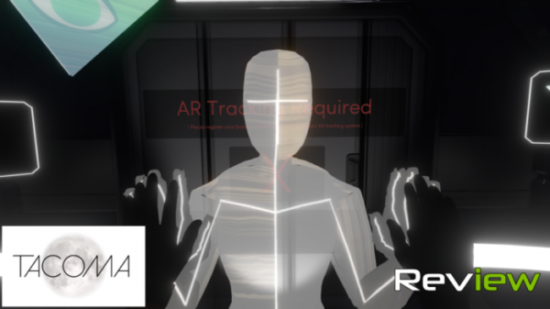Since the release of Gone Home a few years ago, there have been many games that explored how to make gameplay light games more interactive without compromising artistic vision. Everybody’s Gone to the Rapture made waves with its abandoned English village, Firewatch had brilliant characterisation as you explored the wilderness, while What Remains Of Edith Finch showed that players can be taken to otherworldly locations. Tacoma sees Fullbright follow on from Gone Home by taking us to space to uncover what happened to a crew of six and their on-board AI. Naturally for the genre, it doesn’t do much else.
With the story revolving around how this crew of six faced a perilous situation, it’s surprising that the game dispels much of the suspense early on by revealing their fates very early on, nullifying much of the story’s impact. In spite of this, as a story of how a crew bands together in the face of adversity, Tacoma works well. Each of the six humans on board is a fully fleshed out character that, while they don’t necessarily go through much development in the game’s short running time, do seem to have their own motivations, anxieties, and goals, as well as relationships with the other crew members.
There’s a lot to be said for a game that doesn’t make a big song and dance about a character’s race, gender or sexuality – each character is represented by a coloured hologram which takes this one step further. There’s more to be said about how Tacoma builds the world around them. There’s hints of a corporation that governs everything, one character is worried about his son making it to university, and there’s plenty more environmental storytelling besides. It’s well done and, while I hated one important detail that just saying it will spoil the game for you, the character exploration make up for the shortcomings a little.
Tacoma’s isolated location does hamper it somewhat compared to similar games, as the game therefore relies on the writing to do the legwork. The design of the space vessel is striking and the portrayal of the crew as coloured holograms is unique, yet the game still feels empty. Perhaps this is the whole point, but if you were looking to be wowed by the presentation, it may be short-lived.
Exploring this space station you’ll find all sorts of doors, trinkets, and files that go into the situations characters face, but really the enticing hook of Tacoma is within in reviewing the logs that reconstruct conversations. These sequences show the bulk of the story and you are free to walk around, rewind and fast forward the footage to get the perspective of different crew members, as well as open files that the crew bring up, and enter doors using codes you find or learn.
One critical mistake that Tacoma makes is in just how long everything takes to load. The game isn’t overly taxing on modern PCs, and installing the game to an SSD may shorten loading times, as you’d expect, but when those with standard HDDs face a two minute elevator shaft ride in one direction and a thirty second ride on the way back, it breaks the immersion of having the elevator shafts in place of a proper loading screen.
Normally when it comes to games that have very little gameplay, there’s usually some stunning scenery or at least something to do in order to progress the plot. Tacoma does have a little more of this than Gone Home did, but only in the sense that to explore everything means to find little hidden details and touches. Even so, you can reach the story’s end in around two or three hours, so your mileage may vary.



